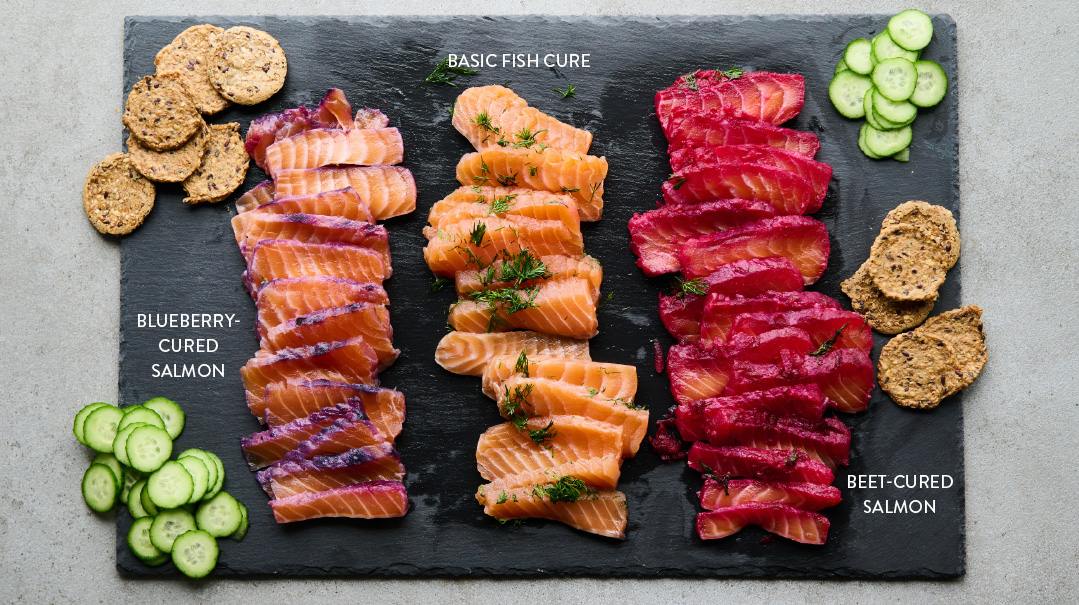Make Ends Meat
| March 28, 2023
Chanie Nayman and Kehilla Butcher, Brooklyn, NY
How to Cook Almost all the Cuts of Meat in Your Butcher’s Case
The number-one question so many people ask around Yom Tov time is “What do I do with this cut of meat?” It makes sense; meat’s expensive, and we want to bring something special to the table to enhance our Yom Tov.
There have been so many articles written about meat in these pages, especially around Yom Tov time, but this time we’re coming from the angle of specific cuts of meat. We’ll skip the education stage and get right down to “just tell me what to do with it.”
First-Cut Brisket
Unlike second cut, first cut is lean, so it can’t be baked for many hours. Some people add liquid to the pan, but some people believe liquid makes it tougher.
For a four-pound brisket: In a large pot, sear the meat in oil. Remove it from the pot and add 6–8 large sliced onions, and sauté until golden. Then add 6 chopped cloves of garlic, 3 tablespoons potato starch, 2 cups dry red wine, 2–3 bay leaves, and 1–2 tablespoons brown sugar. Oil the meat and rub 1 tablespoon imitation mustard, freshly ground pepper, and salt to taste onto it. Return it to the pot and place in a 325°F (160°C) oven. Bake for an hour and a half. Remove the meat from the oven, let it cool, slice, and return to a 300°F (150°C) oven for one hour.
Second-Cut Brisket
This is a very fatty cut of meat with a lot of tough connective tissue. It must be cooked for a long time to break it down and make it soft.
For a three-pound brisket, heat 1 tablespoon oil in a 5–7-quart pot. Add 6 large sliced yellow onions, 1 halved beet, and 3–4 sliced stalks celery. Season the meat generously with salt and pepper, then mix 1 heaping tablespoon paprika, 2 tablespoons brown sugar, 3 tablespoons tomato paste, and 1 tablespoon garlic powder and rub into the meat. Place over the vegetables and cover the lid. Braise for several hours, flipping every hour or so, until fork-tender. Alternatively, bake at 300°F (150°C) for four to five hours.
Any Type of Flanken or Ribs, or Cheek Meat
These are all meats with lots of marbleization and fat, and they become very soft and flavorful with long stretches of cooking time. As a general rule, keep these cuts covered when cooking, and remove from heat when the meat is fork-tender.
For a four-pound bone-in flanken roast, season with salt, black pepper, paprika, and steak seasoning, and sear. Then add the following to a roasting pan or braising pot: 1–2 tablespoons olive oil, 1 large quartered onion, and 6–7 cloves garlic. Mix 1⁄3 cup red cooking wine, 2 tablespoons tomato paste, 1⁄2 cup chicken broth, and 1⁄2 teaspoon dried rosemary (optional). Braise on a low flame or bake at 275°F (135°C) for six to eight hours or until extremely tender.
Top of the Rib
This is a lean cut that will be delicious and flavorful, but it will never be butter soft. Pepper steak is often made from top of the rib. Deckle is a cut taken from under the top of the rib. It is great for pulled beef.
For a four-pound top of the rib roast: Sear meat for 5 minutes on each side in 1 tablespoon oil. Then transfer to a 9x13-inch (23x33-cm) baking dish over 2 large sliced onions and 6 cloves sliced garlic. Season the meat with 2 teaspoons kosher salt, 3 tablespoons tomato paste, 2 cups dry white wine, 1⁄4 cup honey, 2 cups chicken stock, 2 sprigs thyme, and 1 dried bay leaf. Bake at 350°F (175°C) for three hours.
Silver-Tip Roast
This is the tip of the shoulder roast, so you can use recipes interchangeably. It should be baked low and slow. It’s not tough, but it is on the drier side.
For a three-pound roast, marinate in 1 cup dry red wine, 11⁄2 cups orange juice, kosher salt, black pepper, 2–3 tablespoons olive oil, 3 tablespoons honey, 11⁄2 tablespoons horseradish, 3 cloves garlic, and 1–2 bay leaves, along with 1 onion, 1 sweet potato, and 1 stalk celery, cut to your desired size. Remove from the marinade and sear on all sides for 5–7 minutes, then lower heat to a medium-low flame and braise it in the marinade for approximately three hours.
Oops! We could not locate your form.













